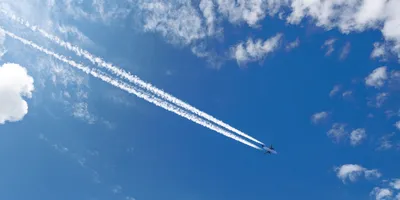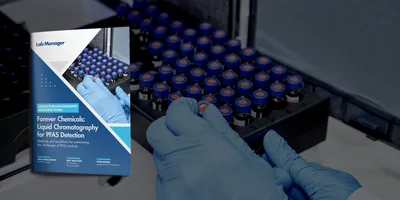Introduction
The debate between chemtrails and contrails has fueled conspiracy theories and scientific discussions for years. While contrails—short for condensation trails—are well-documented atmospheric phenomena created by aircraft engines at high altitudes, the concept of chemtrails suggests a more controversial narrative involving secretive government programs and chemical dispersal.
Understanding the science behind these aerial trails is essential for distinguishing fact from fiction. This article explores the differences between chemtrails vs contrails, how they form, their environmental impact, and why the chemtrail theory remains a topic of debate.
What Are Contrails?
Definition and Overview
Contrails, or condensation trails, are cloud-like formations that appear behind aircraft flying at high altitudes. They form when hot exhaust gases from jet engines mix with the cold, humid air in the upper atmosphere, causing water vapor to condense and freeze into tiny ice crystals.
How Contrails Form
Aircraft Engine Emissions: The combustion of jet fuel releases water vapor, carbon dioxide, and trace gases.
Cold Atmospheric Conditions: At altitudes above 26,000 feet (8,000 meters), temperatures drop to around -40°F (-40°C), allowing water vapor to instantly freeze.
Cloud Formation: The newly formed ice crystals create visible white trails that can persist for minutes to hours, depending on humidity and wind conditions.
Types of Contrails
- Short-lived contrails: Disappear within minutes due to low humidity.
- Persistent contrails: Linger for hours and spread into cirrus-like clouds.
- Persistent spreading contrails: Can contribute to artificial cloud cover, influencing climate by reflecting sunlight.
Environmental Impact of Contrails
- Contribute to climate change by increasing high-altitude cloud cover, trapping heat in the atmosphere.
- No chemical dispersal beyond standard jet engine emissions.
What Are Chemtrails?
Definition and Overview
Chemtrails, short for chemical trails, refer to a widely circulated conspiracy theory suggesting that some aircraft are deliberately spraying undisclosed chemicals into the atmosphere for purposes such as geoengineering, weather modification, or population control.
Chemtrail Theory Claims
Supporters of the chemtrail theory argue that:
- The government or military is conducting covert aerosol spraying.
- Chemicals in chemtrails include aluminum, barium, and strontium.
- Chemtrails differ from contrails due to longer persistence and unusual patterns.
Scientific Response to Chemtrails
- Lack of Evidence: No peer-reviewed studies confirm deliberate chemical spraying.
- Atmospheric Science: Persistent trails are explained by atmospheric conditions, not chemical additives.
- Contrail Formation Variability: Changes in humidity and wind patterns affect how contrails appear, often mistaken for chemtrails.
Chemtrails vs Contrails: Key Differences
| Aspect | Contrails | Chemtrails (Conspiracy Theory) |
|---|---|---|
| Formation | Water vapor condenses and freezes in cold air | Alleged chemical dispersal by aircraft |
| Composition | Ice crystals, water vapor, CO₂, trace gases | Unproven claims of heavy metals or chemicals |
| Duration | Minutes to hours, depending on humidity | Alleged to last longer due to chemical agents |
| Scientific Basis | Well-documented in meteorology | No credible scientific evidence |
| Purpose | A byproduct of aircraft engine exhaust | Theorized weather control, geoengineering |
| Environmental Impact | Contributes to cloud formation and climate effects | No confirmed chemical impact |
Why Do Some Contrails Last Longer Than Others?
The persistence of contrails depends on atmospheric humidity. In dry air, contrails dissipate quickly. In humid conditions, they remain longer and spread out, resembling natural cirrus clouds. This variation leads some observers to believe in chemtrail activity, despite scientific explanations.
Factors influencing contrail persistence include:
- Altitude and Temperature: Higher altitudes with cold temperatures favor contrail formation.
- Air Traffic Density: More flights create more contrails, increasing visible cloud cover.
- Weather Patterns: Humidity and wind speeds affect contrail longevity and dispersion.
Debunking Common Chemtrail Myths
Myth #1: Chemtrails Contain Toxic Chemicals
- Fact: Air and soil sampling studies show no abnormal levels of heavy metals linked to chemtrail claims.
- Jet fuel combustion produces carbon dioxide, water vapor, and small amounts of nitrogen oxides, not heavy metals.
Myth #2: Chemtrails Are Different from Contrails
- Fact: Contrail variation depends on weather conditions, altitude, and aircraft type, not secret chemical programs.
Myth #3: Governments Admit to Chemtrails
- Fact: Misinterpretations of geoengineering research and cloud-seeding studies are often mistaken for evidence of chemtrails.
Myth #4: Contrails Were Shorter in the Past
- Fact: Modern jet engines produce more efficient combustion, leading to more persistent contrails under humid conditions.
Real Atmospheric Research and Climate Impact
While chemtrails remain unproven, scientific studies examine the role of contrails in climate change. Persistent contrails can:
- Trap infrared radiation, contributing to global warming.
- Influence regional weather patterns by altering cloud formation.
- Act as indirect climate influencers, though their effects remain an active area of research.
Geoengineering studies, such as solar radiation management (SRM), explore possible climate interventions but are not linked to ongoing atmospheric spraying.
Conclusion
The distinction between chemtrails vs contrails is clear when examined through the lens of atmospheric science. While contrails are well-understood meteorological phenomena, the chemtrail theory remains unsupported by scientific evidence.
Misinformation about chemtrails often arises from misinterpretations of natural contrail behavior, climate engineering discussions, and scientific uncertainty about aviation’s role in climate change. By understanding the physics and chemistry of contrail formation, we can separate scientific reality from conspiracy theories.
For those concerned about aviation emissions, legitimate discussions exist around carbon footprints, air pollution, and climate impact, but these topics should be addressed through scientific research and policy, rather than unfounded chemtrail speculation.
This content includes text that has been generated with the assistance of AI. Lab Manager’s AI policy can be found here.












